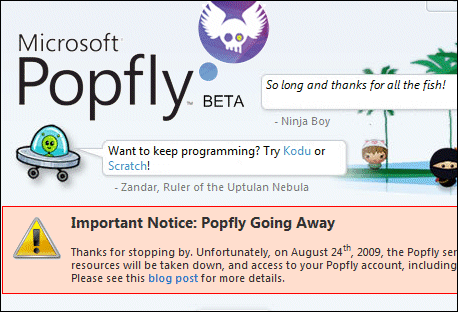I attended an online briefing about Morgan Stanley’s Matrix [warning: lots of Flash with sound effects], a tool for financial trading which has been written in Adobe Flex. Adobe’s Andrew Shorten has more information here, and notes:
Matrix was developed by Morgan Stanley with user experience consultation from Adobe Professional Services and technical delivery by Lab 49 in partnership with Adobe Professional Services and others.

Unfortunately I missed the first part of the briefing thanks to streaming issues (I wasn’t alone), but things settled down after 15 minutes or so. Hishaam Mufti-Bey, Matrix founder and global director at Morgan Stanley, spoke about the application and the technology it uses. He emphasized the value of zero-install:
The technology is out of the way, no-one has a problem with running the application. It’s now about how tight our prices are, how good our content is, which is always what we wanted to have happen … we want to deliver our franchise to the client without taxing their systems, or having to get past firewall issues, or install software and IT security will get in the way and it takes months to deploy.
I couldn’t agree more. The app itself looks great, though details of how it works were sketchy, I guess for commercial reasons. We were also told little about the server side of the application. Performance is said to be good, despite what is apparently 600,000 lines of code (I’m not 100% clear if this is all Flex code running on the client):
We’ve seen up to 40 currency players running on the screen and getting up to about 400 updates a second
claimed Mufti-Bey, though he added later than lack of multi-threading support is an issue. Next, he took a pop at Microsoft’s Silverlight:
Going out to clients and not installing software, that is a major show-stopper for Silverlight. If Silverlight turned around and offered that one day, that I didn’t need to install stuff on the client’s PC, then it would be a head-to-head. Flash is on 97.7% of the world’s browsers. That was a major consideration for us.
It’s an interesting point, though I’d have thought his comments need some qualification. Flash and Silverlight are both browser plug-ins, so the install issue is similar: if the plug-in is already installed, the app will just run in the browser, but if it is not installed in the right version, the user will need to install the plug-in first. According to riastats.com Flash is up to about 74.5% for version 10 and 20.5% for version 9; I’m not sure if Matrix requires version 10, but if it does then Mufti-Bey is exaggerating a little. Matrix currently uses Flash 9 (see comments). Silverlight by contrast is on 30% for version 2 and 1% for the just-released version 3.
Installing a browser plug-in is easy for most of us, but in a locked-down corporate environment may be problematic, and there is always some percentage of installs that will be troublesome. I’ve found installing Silverlight a smooth and quick process; but undoubtedly Flash is a de-facto standard whereas Silverlight is not. Microsoft can only address this by persuading more of us to develop Silverlight apps, and using it more in its own sites and products – like the forthcoming Office 2010 web applications, for example.
Still, the need to install the Silverlight plug-in where necessary is far less burdensome than either a classic Windows setup, or a requirement for the full .Net Framework; and Microsoft has also removed the requirement to run Windows itself by supporting Intel Mac. It sounds as if Microsoft is going in the right direction, even if catching Flash is a tough challenge.
That might not be enough, according to Mufti-Bey. Asked about the importance of designer-developer workflow, he remarked:
You have to look at the people that use that technology. The design community. That’s the biggest problem that Microsoft has. The designers all carry around Apple laptops, they all use the Photosuite [sic] set of software tools. It’s like asking structural engineers to stop using CAD applications. That’s the tool that they use, and if you can’t convince them to switch away from your software suite you are going to get a limited number of designers that will use Microsoft’s toolset … if you can’t get the designers to switch, to learn a new language, then how can you possibly ever get some traction?
Well, it wasn’t the answer to the question posed, but an interesting point nevertheless. Let’s presume that he is right, and nobody will switch from Photoshop. Is it so hard for Mac-wielding designers to work with .NET developers? There must be something in it, bearing in mind the effort Microsoft has made to improve Photoshop import in Expression Blend 3.0.
Overall I would like to have heard more about the process and challenges of developing a large Flex application, and less about why not to use Silverlight, interesting topic though it is.


